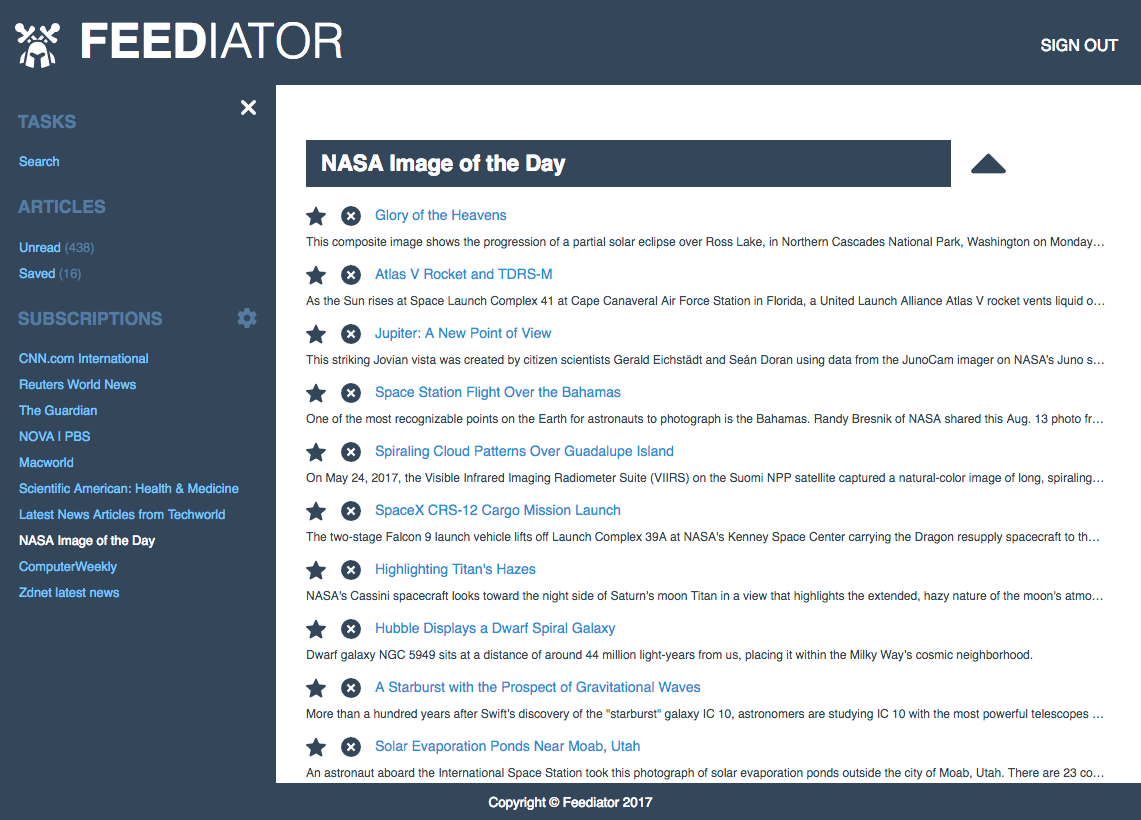Technology Articles
HTML ARIA
by John Vincent
Posted on
ARIA is a set of special accessibility attributes which can be added to any markup, but is especially suited to HTML. The role attribute defines what the general type of object is (such as an article, alert, or slider). Additional ARIA attributes provide other useful properties, such as a description for a form or the current value of a progress bar.
ARIA is implemented in most popular browsers and screen readers. However, implementations vary and older technologies don't support it well (if at all). Use either "safe" ARIA that degrades gracefully, or ask users to upgrade to newer technology.
Deploy Feediator to Digital Ocean
by John Vincent
Posted on
Article that describes the creation and configuration of a Ubuntu droplet at Digital Ocean and the deployment of the Feediator application.
Feediator Website Validation
by John Vincent
Posted on
This document discusses validation issues for the www.feediator.com website.
Feediator Google Authentication
by John Vincent
Posted on
There are a multitude of ways of going about this. I have chosen the following as it fits best with the architecture of the NewsReader application.
Feediator Facebook Authentication
by John Vincent
Posted on
There are a multitude of ways of going about this. I have chosen the following as it fits best with the architecture of the NewsReader application.
X-editable
by John Vincent
Posted on
This stuff ends up sprayed everywhere, so let's create a reference document.
Joi
by John Vincent
Posted on
This stuff ends up sprayed everywhere, so let's create a reference document.
Json Web Tokens
by John Vincent
Posted on
Express application needed a middleware layer to handle authentication and access control.
JSDoc
by John Vincent
Posted on
This stuff ends up sprayed everywhere, so let's create a reference document.
Node Environment
by John Vincent
Posted on
Consider:
- Code is checked into a remote repository. It cannot contain any information that should be private, for example
Sending Emails from Express Application
by John Vincent
Posted on
Sending emails from an Express Application is a standard requirement.
Google Custom Search and Jekyll
by John Vincent
Posted on
Configuring Google Custom Search with Jekyll is straightforward. Let us begin.
